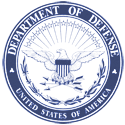Incorporated
Policy changes from this SAMM E-Change memo have been incorporated into the SAMM.
This policy memo supersedes DSCA 15-21.
 | DEFENSE SECURITY COOPERATION AGENCY | 7/13/2020 |
MEMORANDUM FOR :
DEPUTY UNDER SECRETARY OF THE AIR FORCE FOR INTERNATIONAL AFFAIRS
DEPUTY ASSISTANT SECRETARY OF THE ARMY FOR DEFENSE EXPORTS AND COOPERATION
DEPUTY ASSISTANT SECRETARY OF THE NAVY FOR INTERNATIONAL PROGRAMS
DIRECTOR, DEFENSE CONTRACT MANAGEMENT AGENCY
DIRECTOR FOR SECURITY ASSISTANCE, DEFENSE FINANCE AND ACCOUNTING SERVICE-INDIANAPOLIS OPERATIONS
DIRECTOR, DEFENSE INFORMATION SYSTEMS AGENCY
DIRECTOR, DEFENSE LOGISTICS AGENCY
DIRECTOR, DEFENSE LOGISTICS INFORMATION SERVICE
DIRECTOR, DEFENSE LOGISTICS AGENCY DISPOSITION SERVICES
DIRECTOR, DEFENSE THREAT REDUCTION AGENCY
DIRECTOR, MISSILE DEFENSE AGENCY
DIRECTOR, NATIONAL GEOSPATIAL-INTELLIGENCE AGENCY
DEPUTY DIRECTOR FOR INFORMATION ASSURANCE, NATIONAL SECURITY AGENCY
SUBJECT :
Revised Notes on Principles of Use of Military Unmanned Aerial Systems, DSCA Policy 20-31 [SAMM E-Change 482]
REFERENCE :
- Note on Principles of Use of Military Unmanned Aerial Systems or Strike-Enabling Technologies to be used on Unmanned Aerial Systems, DSCA Policy 15-21 [SAMM E-Change 277] (Hereby superseded)
In accordance with the "Policy on the Export and Transfer of Unmanned Aerial Systems" of April 25, 2018, the attached change to the Security Assistance Management Manual (SAMM) revises notes to be used on Letter of Offer and Acceptance (LOA) documents for sale of Military Unmanned Aerial Systems (UASs) to remove references to use of strike-enabling technologies on UASs.
This change will take effect immediately. Appendix 6 of the SAMM will be updated as reflected in the attachment, and this change will be included in the online version of the SAMM found on the DSCA Web Page, www.samm.dsca.mil, as SAMM E-Change 482. If you have questions regarding this policy please contact DSCA/DSA Weapons at (703) 697-9100. For general questions on the SAMM, please contact Mr. Mike Slack, DSCA/SPP/SPI, at (703) 697-9058 or e-mail: micheal.d.slackciv@mail.mil. Implementing Agencies should disseminate this policy to supporting activities.
Charles W. Hooper
Lieutenant General, USA
Director
ATTACHMENT :
As stated
CC :
AFRICOM
CENTCOM
EUCOM
NORTHCOM
SOUTHCOM
INDOPACOM
TRANSCOM
SOCOM
STATE/PM-RSAT
USASAC
SATFA
USACE
NAVSUP WSS
NETSAFA
TRADOC SATFA
AFSAC
AFSAT
DISCS
MARCOR IP
SCETC
USCG International Affairs (G-CI)
SECURITY ASSISTANCE MANAGEMENT MANUAL (SAMM), E-CHANGE 482
Revision of Appendix 6 - Notes on Principles of Use of Military Unmanned Aerial Systems (UASs)
Replace the "Principles of Use of Military Unmanned Aerial Systems (UASs) or Strike-Enabling Technologies to be Used on UASs - (FMS and BPC)" notes in Appendix 6 with the corresponding text below, which removes references to strike-enabling technologies in accordance with updated policy:
Principles of Use of Military Unmanned Aerial Systems (UASs) - FMS
Note Usage |
|---|
Mandatory for FMS LOAs that include military UASs. Mandatory for Amendments that add military UASs. It is the responsibility of the Implementing Agency to identify in the line description note that the UAS in question is a military UAS and controlled under the ITAR whether armed or unarmed. |
References |
(none) |
Note Input Responsibility |
CWD |
Note Text |
"In addition to the General Purchaser Agreements under Condition 2 of the Standard Terms and Conditions, the purchaser agrees:
|
Principles of Use of Military Unmanned Aerial Systems (UASs) - BPC
Note Usage |
|---|
Mandatory for BPC LOAs that include military UASs. Mandatory for Amendments that add military UASs. It is the responsibility of the Implementing Agency to identify in the line description note that the UAS in question is a military UAS and controlled under the ITAR whether armed or unarmed. |
References |
(none) |
Note Input Responsibility |
CWD |
Note Text |
"In addition to the assurances provided in the 505 Agreement, which apply to this transfer, the recipient must provide written agreement to the following principles before transfer to the recipient country:
|
